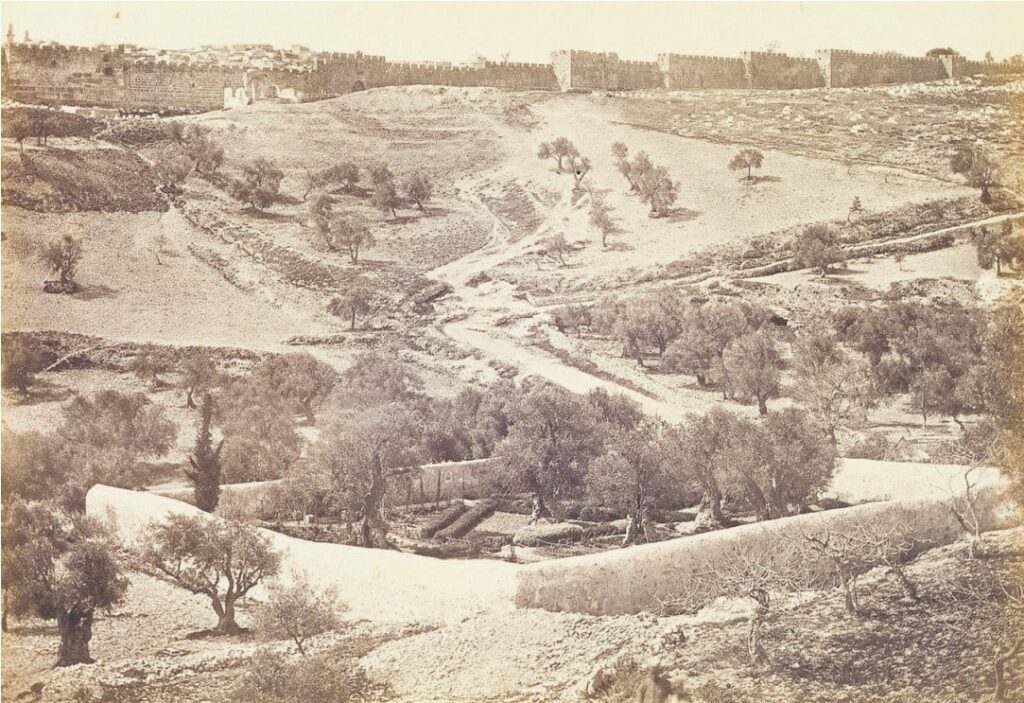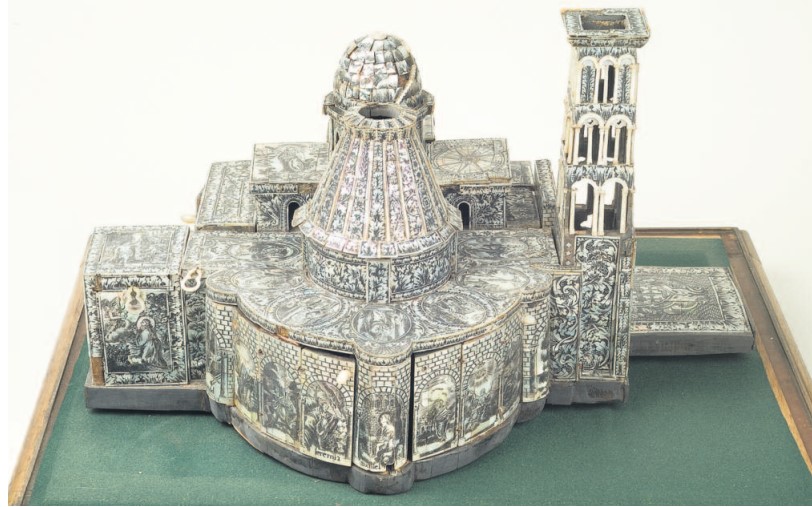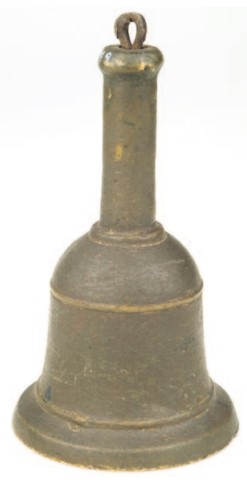Friday 4th August 2017
A world of treasures from the Holy Sepulchre to Paraguay
Jan Graffus

Stonyhurst College houses an impressive array of artefacts from all over the world, collected by Jesuit missionaries and former pupils, for the purpose of education, edification and the prompting of discussion about the universality of the search for God in the heart of mankind.
These objects and many others like them will shortly be displayed in a new museum, set in the refurbished Old Chapel, a space which has been a chapel a museum, a library, a common room and is now to combine elements of all of these past incarnations.
An important area of the museum will focus on the global nature of the college’s collections, reflecting the fact that past and present pupils have come from all over the world to study at Stonyhurst. These artefacts tell important stories which have deep resonance for our own times. This article will examine three representative examples from the Old and New Worlds.
A simple brass mission bell from the Jesuit Reductions in Brazil, which dates from the early to mid 18th century, has a fascinating story. The Jesuit missions or reductions, as they were known, located in Paraguay, Argentina, Uruguay and Brazil, were unique in missionary history.
South America was colonised by Spain and Portugal in the early 16th century, and, from 1609 onwards, the Jesuits set up missions for the indigenous Tupí and Guaraní peoples. In return for the promise of tributes, the people were to be exempt from the usual policy of encomienda, or forced labour, that prevailed in the rest of Spanish and Portuguese South America. The Jesuits also protected them from the slave traders of the region.
The reductions were run on lines that were based on the early Christian communities described in the Acts of the Apostles. The inhabitants worked communal land, and the produce of their labours was shared out equally – food and dress was the same for all.
Free schools and hospitals were established in every community, and the Guaraní were reputed to be a completely literate society. They were skilled craftsmen and made intricate clocks and famously excellent musical instruments. Their working day was six hours long, as opposed to 12 or 14 hours elsewhere in South America, and the remainder was given over to music, dance and worship.
By the mid-18th century there were about 300,000 Indian Catholics in South America living on some 30 missions. In 1759 the Portuguese government, which had long regarded the Jesuits’ work as an attack on their authority, passed a decree expelling them from their territories. In 1767 the Spanish crown followed suit. The Guaraní abandoned their havens and retreated to the rain forests in the years following the expulsion of the Jesuits. Today all that is left of 150 years of a remarkable social and evangelical experiment are ruins. The 1986 Roland Joffé film, The Mission, tells the story of the Jesuit expulsion and the futile war of protest fought by the Guaraní. The film is set in the mission of São Miguel das Missões, which may be the original home of this Mass bell. In 1894, the then provincial superior of the German Jesuits presented the bell to Stonyhurst.
A wood and mother-of-pearl model of the Church of the Holy Sepulchre, was created in 1760 by an Italian family of artisans, part of the souvenirs on offer to the thousands of Christian pilgrims who flocked to the Holy Land.
The Church of the Holy Sepulchre in Jerusalem is built over the most sacred site for Christians – the rock of Calvary where Jesus was crucified. It also encompasses the tomb in which he was laid – the Holy Sepulchre.
This is the place where St Helena, the mother of the 4th century Roman emperor, Constantine, was reputed to have discovered the cross to which Christ was nailed. After the failed Jewish revolt against Roman occupation in the year 70 AD, much of Jerusalem was destroyed and the site of the Crucifixion was hidden below a Temple dedicated to Venus. In 325 Constantine, newly converted to Christianity, started to build a huge basilica, encompassing the Rock of Calvary, the site of the Tomb of Christ, and the place where his own mother, Helena, had found the cross.
In the 7th century, Jerusalem was captured by the Persians and became a Muslim city. The new rulers were generally happy to allow Christian pilgrimage to flourish, and the numbers making the dangerous and lengthy journey grew. In 1009 the Caliph destroyed the church, hacking the site of the tomb down to the bedrock. The shock and outrage reverberating throughout Christian Europe was one of the catalysts for the Crusades, which followed in 1099.
In the 12th century, restoration of the ruined church began, and this continued down to the 16th century when much work was done by the Franciscans. Further work is still needed today, but agreement between the Christian guardians of the site of the Holy Sepulchre is difficult to obtain, and disagreements and tensions are common. Pilgrimages to this most holy of places have been taking place for almost 2000 years, bringing important revenue to the local inhabitants.
People who made the journey in the past invariably wanted a tangible reminder of their efforts, and the souvenir trade has prospered in Jerusalem since the 8th-century German monk, Brother Felix, noted with dismay that the sellers of souvenirs followed him even into the church itself. That did not stop him buying many items. This model of the church was at the top end of the market.
It was aimed at the wealthy and fashionable pilgrim and is made from expensively engraved mother or pearl and carved bone. The model comes apart to show the interior, including the Holy Sepulchre itself. It was made in 1760 by an Italian craftsman, Gioani, whose father Giuse had evidently been in the same business and had gained some fame for himself as a maker of these models.
A pair of beaded deerskin Plains Indian Moccasins has another story to tell. Much of early North American Jesuit missionary history is told through numerous letters known as the Jesuit Relations. In addition to relating the stories of such 17th-century Jesuit martyrs as Isaac Jogues (1607-1646) and Jean Brébeuf (1594-1649), they provide invaluable details of the customs and practices of the Indians.
In the early 19th century the region from Saint Louis in Missouri to the Pacific Northwest was opened up by a Belgian Jesuit, Fr Pierre de Smet (1801- 1873) who arrived in America as a youthful missionary, aged 20.
Following the trails laid out by fur traders and frontiersmen, Fr de Smet travelled tirelessly, forming close bonds with many Indian people, for whom he was the one westerner they could trust. He mediated and defended them against exploitation and fraud by traders, settlers and government agents.
For over 20 years he worked for peace between the civil authorities and the Sioux Indians, and was highly respected for his honesty and plain speaking by their chief Tatanka Iyotaka (1831-1890), better known as Sitting Bull. Fr de Smet made no fewer than 19 journeys back to Europe to seek support for the North American missions. On one of these he travelled to Lancashire and spoke at Stonyhurst College. Shortly after Fr de Smet’s death in 1873, an unknown Jesuit gave the deerskin moccasins to Stonyhurst.


